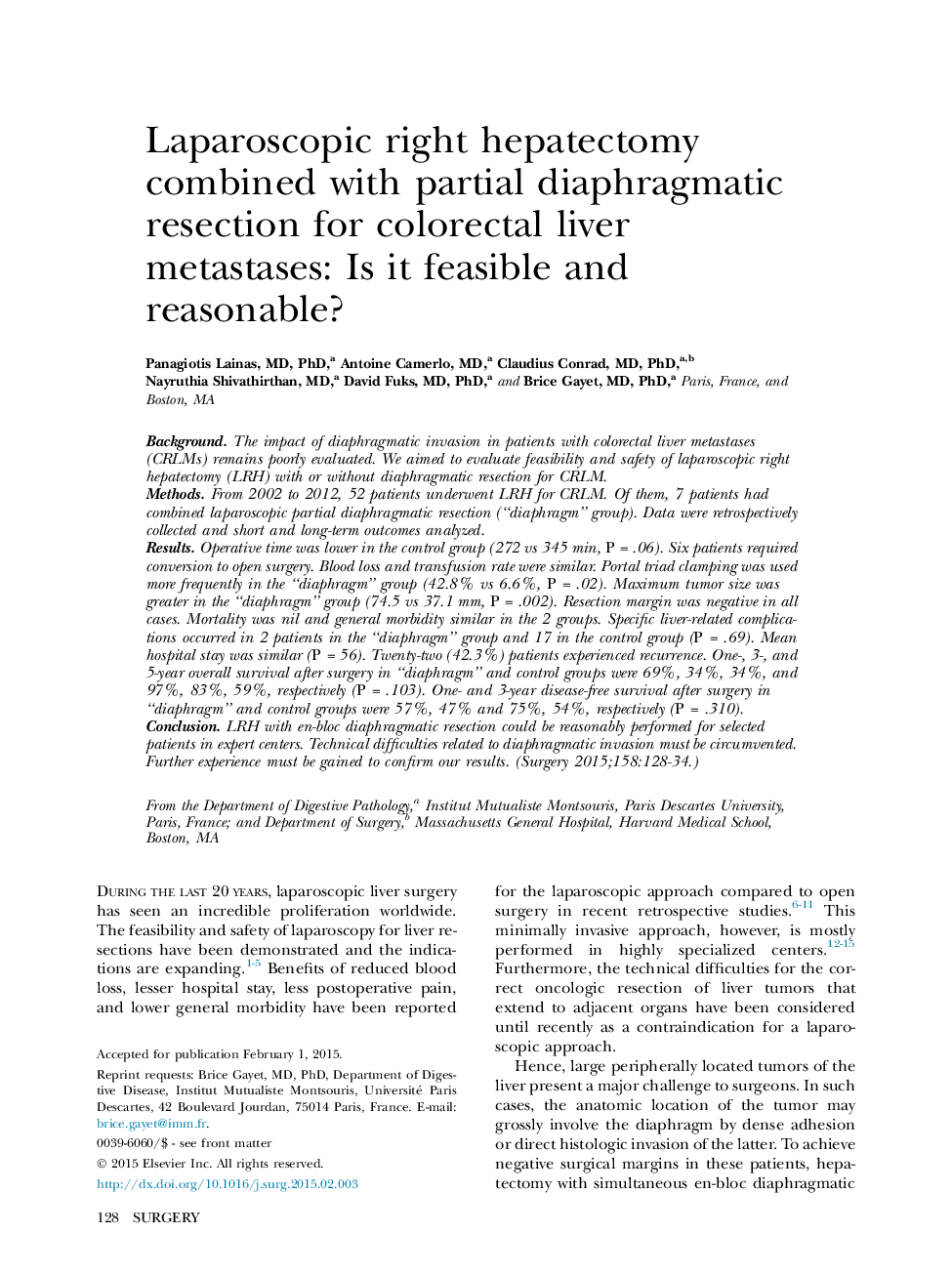| Article ID | Journal | Published Year | Pages | File Type |
|---|---|---|---|---|
| 6255309 | Surgery | 2015 | 7 Pages |
BackgroundThe impact of diaphragmatic invasion in patients with colorectal liver metastases (CRLMs) remains poorly evaluated. We aimed to evaluate feasibility and safety of laparoscopic right hepatectomy (LRH) with or without diaphragmatic resection for CRLM.MethodsFrom 2002 to 2012, 52 patients underwent LRH for CRLM. Of them, 7 patients had combined laparoscopic partial diaphragmatic resection (“diaphragm” group). Data were retrospectively collected and short and long-term outcomes analyzed.ResultsOperative time was lower in the control group (272 vs 345Â min, PÂ =Â .06). Six patients required conversion to open surgery. Blood loss and transfusion rate were similar. Portal triad clamping was used more frequently in the “diaphragm” group (42.8% vs 6.6%, PÂ =Â .02). Maximum tumor size was greater in the “diaphragm” group (74.5 vs 37.1Â mm, PÂ =Â .002). Resection margin was negative in all cases. Mortality was nil and general morbidity similar in the 2 groups. Specific liver-related complications occurred in 2 patients in the “diaphragm” group and 17 in the control group (PÂ =Â .69). Mean hospital stay was similar (PÂ =Â 56). Twenty-two (42.3%) patients experienced recurrence. One-, 3-, and 5-year overall survival after surgery in “diaphragm” and control groups were 69%, 34%, 34%, and 97%, 83%, 59%, respectively (PÂ =Â .103). One- and 3-year disease-free survival after surgery in “diaphragm” and control groups were 57%, 47% and 75%, 54%, respectively (PÂ =Â .310).ConclusionLRH with en-bloc diaphragmatic resection could be reasonably performed for selected patients in expert centers. Technical difficulties related to diaphragmatic invasion must be circumvented. Further experience must be gained to confirm our results.
